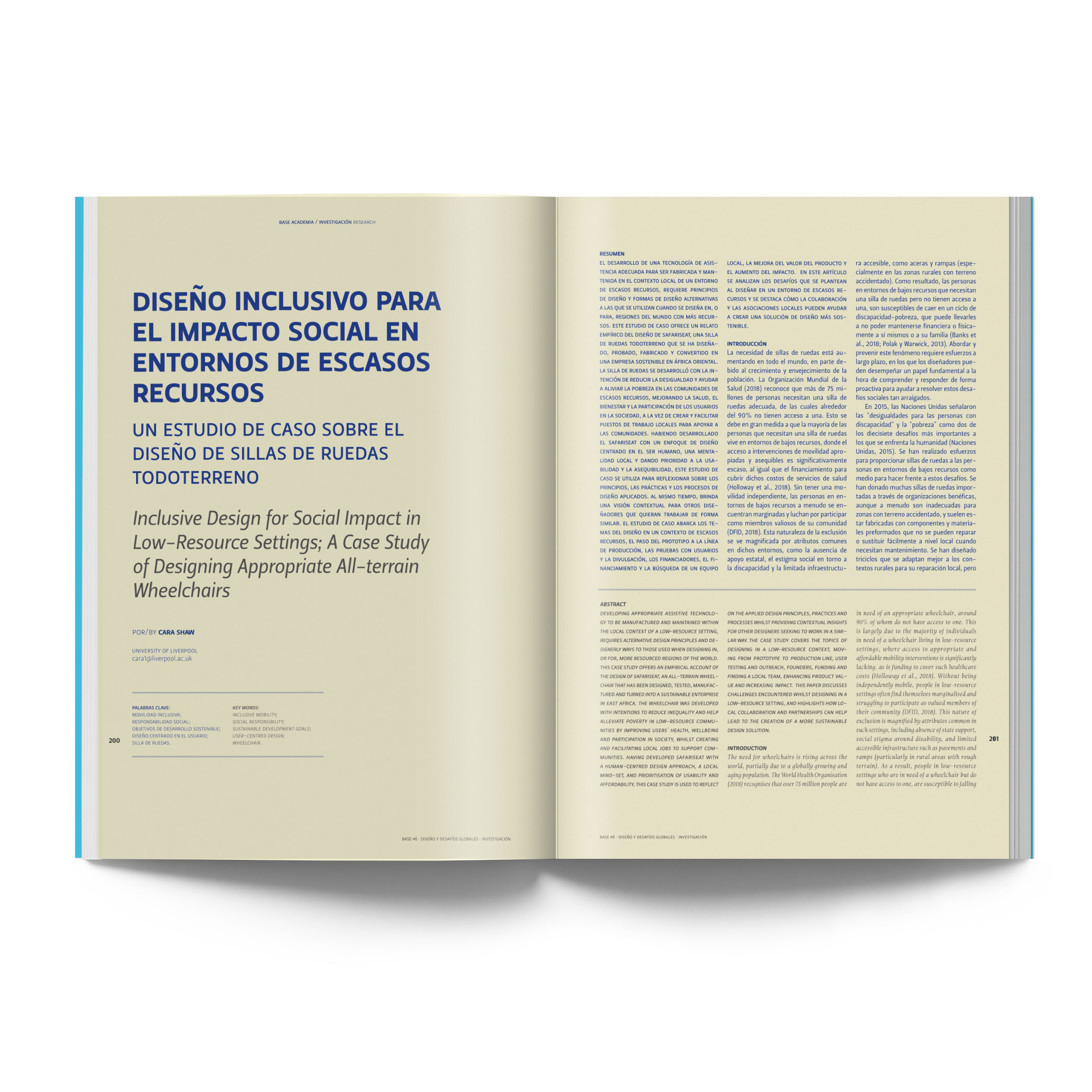Inclusive Design for Social Impact in Low-Resource Settings A Case Study of Designing Appropriate All-terrain Wheelchairs
Main Article Content
Abstract
Developing appropriate assistive technology to be manufactured and maintained within the local context of a low-resource setting, requires alternative design principles and designerly ways to those used when designing in, or for, more resourced regions of the world. This case study offers an empirical account of the design of SafariSeat, an all-terrain wheelchair that has been designed, tested, manufactured and turned into a sustainable enterprise in East Africa. The wheelchair was developed with intentions to reduce inequality and help alleviate poverty in low-resource communities by improving users' health, wellbeing and participation in society, whilst creating and facilitating local jobs to support communities. Having developed SafariSeat with a human-centred design approach, a local mind-set, and prioritisation of usability and affordability, this case study is used to reflect on the applied design principles, practices and processes whilst providing contextual insights for other designers seeking to work in a similar way. The case study covers the topics of designing in a low-resource context, moving from prototype to production line, user testing and outreach, founders, funding and finding a local team, enhancing product value and increasing impact. This paper discusses challenges encountered whilst designing in a low-resource setting, and highlights how local collaboration and partnerships can help lead to the creation of a more sustainable design solution.
Article Details
References
Constantine, D., Hingley, C. & Howitt, J. (2006). Donated wheelchairs in low-income countries - issues and alternative methods for improving wheelchair provision. Liverpool: IET Conference Proceedings.
Costanza-Chock, S. (2020). Design Narratives: From TXTMob to Twitter. Design Justice. https://design-justice.pubpub.org/pub/0v6035ye/release/1
Department for International Development. (2018). DFID’s Strategy for Disability Inclusive Development. https://assets.publishing.service.gov.uk/government/uploads/system/uploads/attachment_data/file/760997/Disability-Inclusion-Strategy.pdf
Gulliver, A., Gibbon, D., Diouf, J. & Dixon, J. E. (2001). Farming Systems and Poverty; Improving Farmers' Livelihoods in A Changing World. Rome: FAO & the World Bank.
GDI Hub & Partners for UK Department for International Development. (2018). Scoping Research Report On Assistive Technology On The Road For Universal Assistive Technology Coverage. https://assets.publishing.service.gov.uk/media/5d1f5a2fed915d0bbba6bf15/AT_Scoping_Report-Final.pdf
Mhatre, A., Martin, D., McCambridge, M., Reese, N., Sullivan, M., Schoendorfer, D., Wunderlich, E., Rushman, C., Mahilo, D. & Pearlman, J. (2017). Developing product quality standards for wheelchairs used in less-resourced environments. African journal of disability. https://www.ncbi.nlm.nih.gov/pmc/articles/PMC5594264/
Polak, P. & Warwick, M. (2013). The Business Solution To Poverty: Designing Products and Services For Three Billion New Customers. Oakland: Berrett-Koehler Publishers.
United Nations. (2021). The 17 Sustainable Development Goals. The United Nations. https://sdgs.un.org/goals
Whirlwind Wheelchair International. (2018, August 18). Simplified Strength Testing of Manual Wheelchairs. Whirlwind Wheelchair. https://whirlwindwheelchair.org/articles/simplified-strength-testing-of-manual-wheelchairs/
World Health Organization. (2018). Assistive Technology. WHO. https://www.who.int/news-room/fact-sheets/detail/assistive-technology


